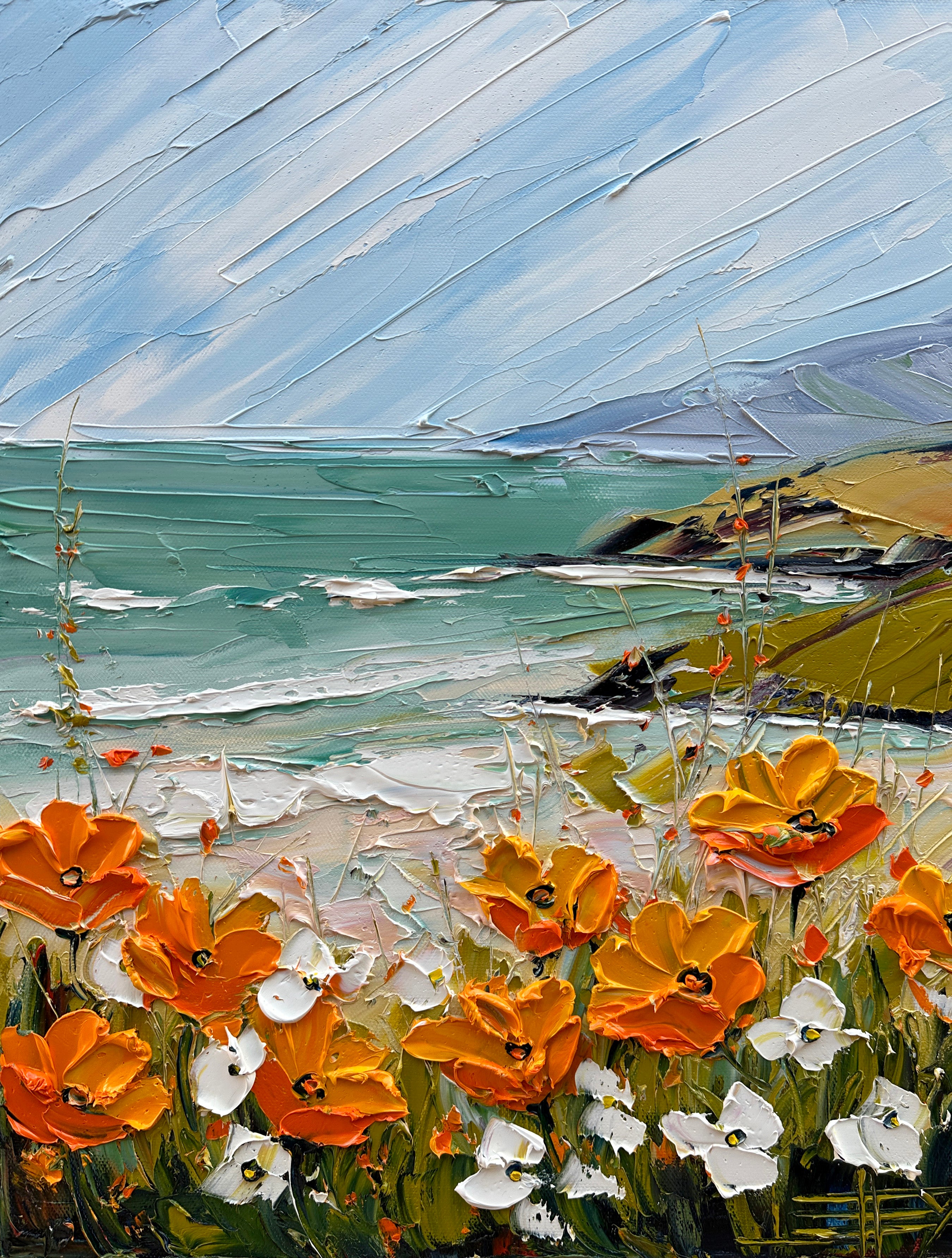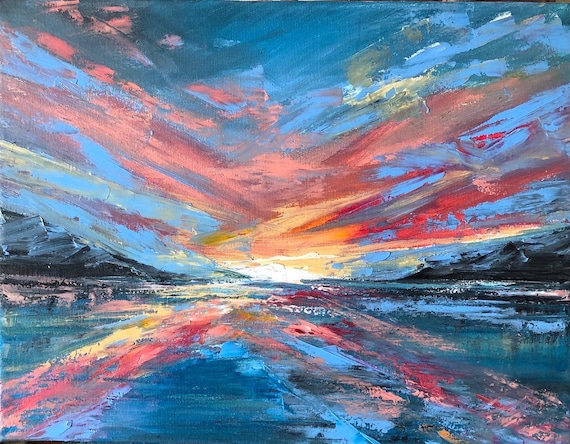Stylish Design Inspirations with Oil Paintings for Sale
Stylish Design Inspirations with Oil Paintings for Sale
Blog Article
Exploring Everything About Oil Paints: An Overview to Comprehending Their Appeal and Value
Oil paintings have astounded target markets for centuries, using a peek into the imaginative proficiency of numerous ages. Their abundant background is intertwined with innovative strategies and extensive emotional expression. Understanding the products and techniques behind these artworks can boost admiration. Furthermore, the market for oil paints provides chances for capitalists and collection agencies alike. As one explores this interesting world, the question emerges: what makes an oil paint genuinely important?
The Background of Oil Painting: A Trip Through Time
Oil painting has roots that date back to old times, it genuinely flourished throughout the Renaissance, when artists found its versatility and abundant color capacity. Early instances can be mapped to the 7th century, with techniques advancing notably throughout societies. The medium came to be popular in Northern Europe in the 15th century, specifically through the jobs of artists like Jan van Eyck, who spearheaded its use for thorough realistic look and dynamic tones. This period noted a separation from tempera paints, enabling higher deepness and texture. As oil painting spread, it affected plenty of musicians, resulting in masterpieces by prominent numbers such as Leonardo da Vinci and Rembrandt. The medium's tradition proceeds, forming the art globe well into modern times.
Comprehending Oil Paints: Materials and Techniques
As musicians discover the globe of oil paints, they encounter a diverse range of products and strategies that specify this medium. The main elements of oil paint consist of pigments, which give shade, and drying out oils, such as linseed, that bind the pigments and facilitate application. Various additives can customize the paint's structure and drying out time, boosting flexibility. Methods like glazing, where transparent layers are developed up, and impasto, which includes using thick paint, enable various aesthetic results. In addition, making use of brushes, scheme blades, and also fingers can produce special appearances and coatings. Recognizing these strategies and products makes it possible for musicians to totally share their creative thinking and attain the wanted influence in their art work.
The Duty of Shade in Oil Paintings
Shade plays a critical role in oil paints, influencing both aesthetic appeal and psychological vibration. Comprehending shade theory basics, including the relationships in between colors, can improve an artist's capacity to communicate state of mind and environment. Additionally, understanding color blending techniques permits for higher deepness and richness in a paint's combination.

Color Concept Fundamentals
Understanding color theory is vital for artists collaborating with oil paints, as it forms the structure for developing harmonious and aesthetically appealing make-ups. Color concept includes the research of exactly how colors engage, the color wheel, and the partnerships between primary, additional, and tertiary colors. Musicians utilize corresponding colors to boost contrasts and create centerpieces, while analogous shades promote unity and cohesiveness within an item. Additionally, the concepts of awesome and warm shades affect the perception of deepness and space in a paint. Comprehending these concepts enables musicians to manipulate color effectively, assisting the viewer's eye and interacting their desired message. Mastery of color concept ultimately enhances a musician's ability to communicate emotions and concepts via their work.
Emotional Influence of Shade
The emotional influence of color in oil paintings plays a vital duty in how visitors attach and perceive with art work. Colors evoke certain sensations and state of minds, affecting the viewer's psychological state. Cozy hues like reds and oranges can produce a feeling of heat and power, while awesome tones such as blues and environment-friendlies commonly stimulate calmness or introspection. Artists tactically pick shade palettes to enhance narrative aspects, assisting the target market's emotional trip. The saturation and comparison of colors even more enhance these results, drawing interest and developing emphasis. Eventually, the interaction of colors in oil paintings not only boosts their aesthetic appeal but also offers as an effective tool for emotional expression, enriching the viewer's experience and analysis.
Shade Combining Techniques
While several facets of oil painting add to the total structure, mastering shade blending methods is essential for achieving preferred impacts and deepness. Shade blending can be approached through numerous techniques, including the additive and subtractive procedures. Additive mixing entails incorporating colors of light, while subtractive blending depends on pigments, where colors blend to develop new tones. Artists typically make use of a restricted palette to develop harmonious jobs, comprehending the connections between key, secondary, and tertiary shades. Techniques such as glazing and scumbling better improve deepness and brightness. By skillfully blending shades, an artist can evoke feelings, create centerpieces, and achieve a feeling of realism, eventually elevating the paint's psychological and aesthetic influence.
Famous Oil Painters and Their Iconic Works

Renowned for their mastery of color and technique, oil painters have created a few of the most renowned art work in background. Prominent musicians like Vincent van Gogh astounded target markets with his stirring brushwork in "Starry Evening," while Claude Monet's "Impression, Daybreak" prepared for Impressionism. Leonardo da Vinci's "Mona Lisa" remains an enduring sign of imaginative genius, showcasing his ability in catching human expression. Rembrandt's "The Evening Watch" highlights his innovative use of light and shadow. Other remarkable figures include Pablo Picasso, who transformed contemporary art with his strong trial and error in jobs like "Les Demoiselles d'Avignon," and Georgia O'Keeffe, whose vibrant depictions of flowers and landscapes helped define American modernism. Each artist's unique style contributed considerably to the oil paint landscape.
Exactly how to Examine the Top Quality of an Oil Paint
Reviewing the top quality of an oil paint involves a mindful evaluation of craftsmanship strategies, as well as an evaluation of shade and make-up. Observing brushwork, layering, and the application of paint can disclose the musician's ability degree. Additionally, the interaction of colors and the overall plan of elements add significantly to the painting's aesthetic value.
Assessing Craftsmanship Strategies
A thorough analysis of workmanship techniques is vital for determining the top quality of an oil paint. Evaluators need to first check out the application of paint; thick, textured brushstrokes might suggest a skilled hand, while excessively consistent applications could show an absence of depth. oil paintings for sale. The layering strategy is likewise essential; the presence of glazes and differed thickness can improve luminance and complexity. In addition, the quality of the products made use of, such as the canvas and pigments, plays a considerable duty in toughness and overall aesthetic. Focus to detail in aspects like sides and changes between shades mirrors the artist's commitment to their craft. Eventually, these strategies contribute to the painting's emotional effect and market value, acting as signs of the artist's skill and intent
Evaluating Shade and Make-up
While assessing the high quality of an oil paint, one have to concentrate on the interplay of color and make-up, as these aspects are fundamental to the art work's overall influence. Color selections can develop and stimulate feelings state of mind; therefore, the artist's combination need to be checked out for harmony and contrast. A well-balanced structure guides the visitor's eye and develops a feeling of unity. Musicians frequently utilize strategies like the policy of thirds or leading lines to boost visual rate of interest. Furthermore, using light and shadow can add depth, improving the three-dimensionality of the paint. Inevitably, a successful oil painting marries color and structure, involving the visitor and welcoming a much deeper appreciation of the artist's vision and method.
Caring for and Preserving Oil Paintings
Appropriate treatment and conservation of oil paints is crucial for keeping their honesty and longevity. To protect these artworks, it is vital to display them away from direct sunlight, which can cause fading and discoloration. Maintaining a stable environment with controlled temperature level and moisture more help in protecting against damages. Cleansing need to be done carefully making use of a soft, completely dry towel, staying clear of any kind of extreme chemicals that might hurt the paint or varnish. Routine assessments for indications of degeneration, such as splitting or flaking, are a good idea. When delivering or storing oil paints, appropriate extra padding and framework are required to prevent physical damage. Eventually, diligent treatment adds to the aesthetic allure and value of oil paintings over time.
The Market for Oil Paintings: Investing and gathering
Understanding the market dynamics for oil paints is important for enthusiasts and investors alike. The value of these artworks is affected by numerous elements, consisting of the musician's track record, historic significance, and present fads. Enthusiasts typically look for items that reverberate personally while thinking about prospective admiration in worth. Auctions and galleries offer as key places for trading, with prices changing based upon need and rarity. Spending in oil paints requires research into the market, in addition to an understanding of authenticity and provenance. Furthermore, emerging artists may use possibilities for substantial returns, while developed names can regulate high rates. Overall, a calculated strategy to accumulating can generate both visual satisfaction and economic incentives.

Often Asked Inquiries
What Are the Environmental Effects of Oil Paint Products?
The ecological impacts of oil painting materials consist of the launch of volatile organic compounds (VOCs), dangerous waste generation, and source removal for pigments. These variables add to pollution and ecological degradation, raising issues among environmentally aware artists and customers.
How Do Different Canvases Influence Oil Painting Results?
Various canvases influence oil painting results substantially. Absorbency, surface, and appearance high quality can change paint application, drying times, and color vibrancy. Artists usually choose certain canvases to attain desired impacts and boost their imaginative expression.
Can Oil Paintings Be Restored if Harmed?
If damaged, Oil paintings can undoubtedly be recovered. Specialist conservators utilize various methods to fix rips, tidy surface areas, and address staining, ensuring that the art work preserves its original charm and value for future generations.
What Are the Indications of an Initial Oil Paint?
The indicators of an initial oil paint consist of noticeable brush strokes, texture variations, and an uneven canvas weave (oil paintings for sale). Additionally, authenticity may be verified with provenance, signatures, and the visibility of a varnish layer special to oil tools
Exactly How Has Innovation Influenced Modern Oil Paint Techniques?
Innovation has significantly influenced modern oil painting techniques by introducing electronic click here devices for preparation, boosted products for texture and long life, and online platforms for selling and sharing art, consequently broadening artists' innovative opportunities and target market get to. Oil painting has origins that date back to ancient times, it really grew during the Renaissance, when artists discovered its versatility and rich shade capacity. The psychological influence of color in oil paintings plays a vital function in how viewers regard and link with art work. While numerous facets of oil painting add to the general structure, understanding color mixing techniques is necessary for achieving desired impacts and deepness. Reviewing the quality of an oil painting includes a cautious evaluation of workmanship strategies, as well as an evaluation of shade and make-up. While evaluating the quality of an oil painting, one need to concentrate on the interaction of shade and make-up, as these components are basic to the art work's total impact.
Report this page